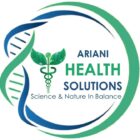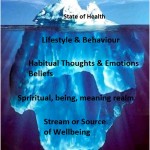Health Education is Important!
Written by Dr Arien
After having been involved in developing technical selection criteria for health and wellness screening interventions, as well as the subsequent selection process of submitted tenders, it became clear that far too little emphasis is placed on ongoing and sustainable health and wellness education in the thriving workplace wellness industry.
Having been a pioneer in the early days (late ‘90’s) of workplace wellness in South Africa , I was amazed to see all the development over the past 15 years has been. But sadly, development mostly in computer technology, tracking and data capturing systems, report generation, and more and more health screening tools and protocols! Very little effort has gone into really finding lasting solutions to address health risks from the inside out. One way of doing this, is through ongoing employee health and wellness education and training. Education was mentioned in passing because it was requested in the tender specifications, but very little detail on actual content or sustainability of education process, was provided.
Focusing only on nutrition, often emphasizing all the confusing and opposing views, or physical fitness, is not enough. H&W education has to address mental-emotional health, spiritual wellbeing, practical stress management and nutrition, especially teaching people to develop self sustainable wellness food gardens. We all have to learn that thoughts and beliefs, leading to specific emotional states and behaviour, coming from deep within our source of wellbeing, will lead to healthy habits that ultimately create our physical reality. If we don’t change on all of these levels, the physical body cannot follow.
The adapted iceberg model of health: a practical illustration of the level we need to address to find lasting and sustainable wellness solutions to address the burden of disease in SA
The physical state of health (health or illness) is only the tip of the iceberg. The true origin of dis-ease or health, lie beneath the surface. Even lifestyle & behaviour lie close to the surface. That is why it’s so difficult to adopt a healthy lifestyle! We try to do it with willpower. It doesn’t work. The real level we have to work on is the level of thoughts, emotions and beliefs. This level also connects us to our soul or spiritual level, and ultimately to our Source of Wellbeing, Inner Being, God or our concept of something bigger and more than our physical separate sense of self or ego.
People are hungry for information and knowledge. Self responsibility is recommended and advised, but without the necessary education, this process simply cannot happen!
It is time for companies to recognise the importance and effects of implementing workplace wellness interventions that recognise the ever increasing need for a broader approach to employee health and wellness, as opposed to the previous emphasis on HIV/Aids only programs. Wellness interventions have to include all the chronic health challenges, inlcl. HIV/Aids, by identifying their impact through measurable return on investment protocols on company wellness investments. It is important for employees to learn and understand that managing preventable health conditions will benefit both themselves and ultimately their employer (and livelihood) through the impact their health has on the bottom line of their company\’s financial success. This is done through skills development in the form of ongoing and sustainable health and wellness education.
Peer, or now rather called wellness educator training or WET, is becoming an ever increasing practical way of ensuring and maintaining lasting health and wellness behaviour that help people change from within, from the deepest recesses of their minds, to the genetic imprint of their DNA. Peer educators themselves requested this name change. They feel that as wellness educators, their work will be much easier and better accepted by their peers. PET is still associated with HIV/Aids training only, while WET training is so much more! It includes the wellness solution based management for all the chronic diseases of lifestyle, incorporating and emphasizing heart health (high cholesterol, high blood pressure, heart disease), mental-emotional health, immune system health (acute infections, TB, cancer, HIV/Aids), blood sugar balance (diabetes mellitus), stress management, basic anatomy, physiology, nutrition, lots of fun, etc! WET training is also becoming a very effective EAP tool as wellness educators become wellknown and trusted among their peers who start to confide in them for assistance. The WET’s then act as conduits for referral to EAP councilors and other health practitioners.
WET should include the following:
- Definitions & models of wellness, and a long term vision for wellness
- Basic anatomy and physiology – know how your body and mind work
- Qualities, boundaries, limitations of a good peer educator / wellness champion.
- Stress management (incl. life change & diversity management)
- Nutrition, incl. wellness food gardens
- Fitness and movement
- Mental-emotional wellbeing
- Chronic diseases of lifestyle to integrate the learning model: as per company request: e.g. Heart (hypertension, high cholesterol, stroke, heart attacks); Immune system health (HIV/Aids, TB, cancer, colds/flu); Diabetes & blood sugar balance; Musculoskeletal health, using osteoporosis & osteoarthritis as examples; Male & Female reproductive health; Mental-emotional health, using dysthymia & depression as examples.
The focus and emphasis are on education and training (to address and manage) the burden of disease caused by the chronic lifestyle diseases (or rather health challenges!) through health, wellness and stress management training.
Conclusion
The spin offs (such as life skill training, leadership development, skills development, addressing social responsibility targets) from the basic training and education in health, wellness and an integrative whole being approach to the chronic diseases of lifestyle, are very encouraging. It is also a clear indication of the success of wellness education and training as a workplace wellness intervention, and the only intervention to consistently demonstrate long term, lasting and sustainable, health behaviour change. Developing life skills and leadership qualities, experiencing personal growth, learning to manage emotions, increased self esteem and self confidence, lowering blood pressure, improving the health and wellbeing of colleagues, friends, family and community, all added to the increase in knowledge on health and wellness, show that wellness education and training have to be one of the best sustainable and return on investment wellness interventions available today, while also serving as a powerful EAP tool.

